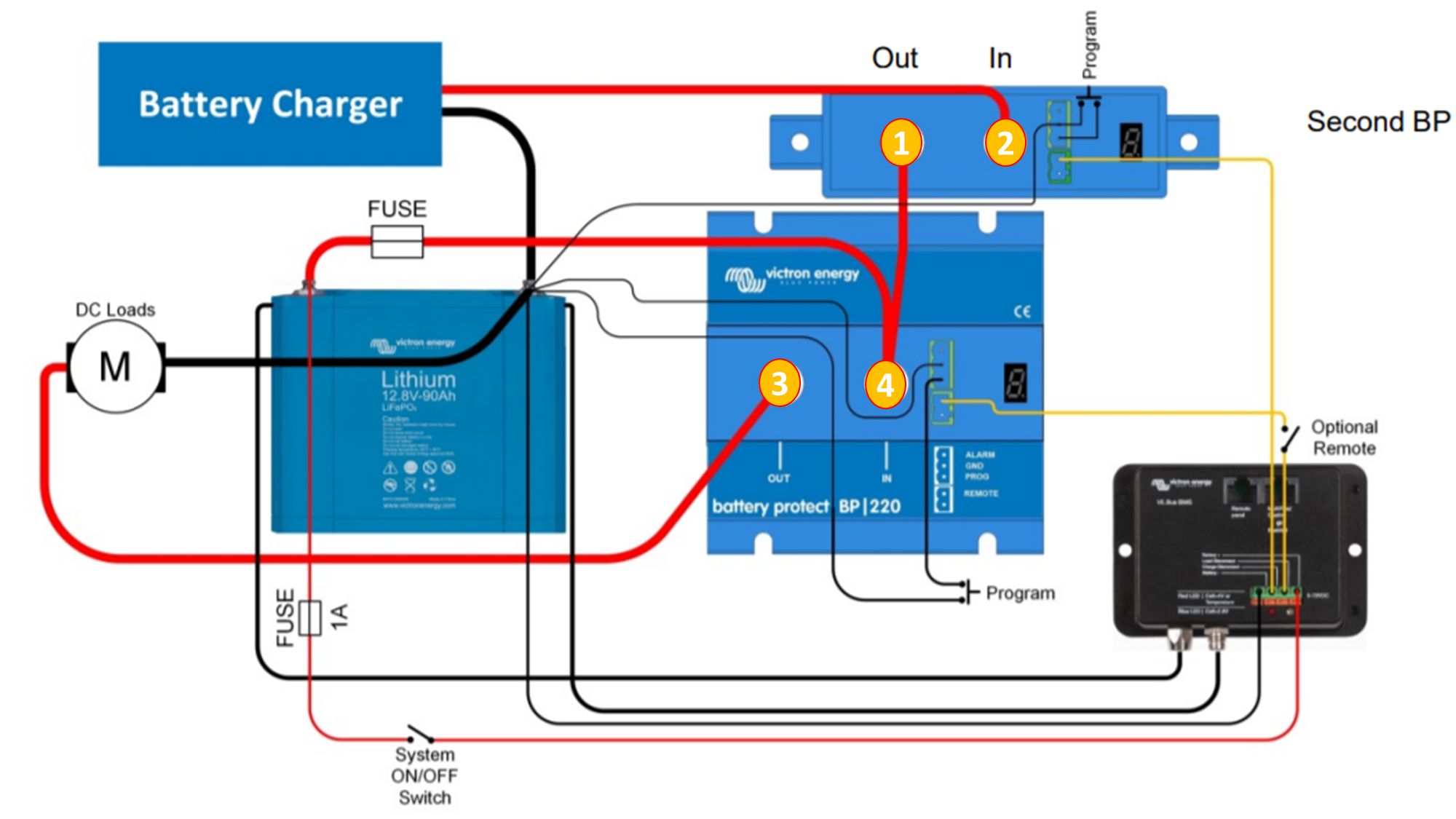Dear Victron community experts,
I am seeking your advice and verification for the following setup.
I would like to have a Battery solution which is permanently connected to the PV, but disconnects automatically when fully charged and no 12V load is applied.
In case the PV was unable to fully charge the Battery, I would like to have the option to charge via a Blue Smart Charger.
An automated complete disconnection of the Battery is desired for mainly 2 reasons:
A) for safety reasons and
B) to avoid the Battery being permanently charged via PV and gets over time discharged due to standby power consumptions in the setup.
Hence, the idea here is to have one Smart Battery Protect on the charging side of the Battery as well as another Smart Battery Protect on the load side of the Battery. Hope this logic of mine by using 2 SBP will actually do the wishfully automated disconnection of Battery when not in demand.
On the Charging Side:
Either PV or the Blue Smart charger would charge the 200Ah LiFePo4 Battery with an integrated BMS via the SBP 12/65.
On the Load Side:
Is a DOMETIC 12V/2000W Power Inverter with an external on/off switch as well as DC load via the SBP 12/220 connected.
These are now my questions:
With this setup, the Power Inverter will be seen as a load by the SBP 12/65 on the charging side. Since the SBP flow is from IN to OUT, I assume the Power Inverter with capacitor on its input will cause reverse current backflow and damage the SBP 12/65!
- If so, how do you overcome this when the battery is simulations charging (current flow from one direction) as well as used as power source to run the Power Inverter (which will cause current flow to the opposite direction). Means, both SBP (on the charging as well as load side) are actively working.
- I can read in the SBP manual “..For that use case, please use the SBP to control the remote on/off switch on the inverter, instead of disconnecting the higher power DC line.” And luckily the Power inverter has an external on/off switch, but how is this helping in this setup to protect the SBP 12/65? If the Power inverter gets disconnected, I will not be able to use the Power Inverter at all.
I would like to thank you already now in advance for your comments and suggestions.
oMora


